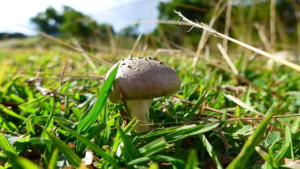Optimizing Tree Trimming and Eco-Friendly Yard Waste Disposal
Regular tree trimming is crucial for maintaining tree health and safety across residential and public spaces. Trimming not only shapes trees but also promotes light penetration and air circulation, which are vital for plant health. After trimmi…….

Regular tree trimming is crucial for maintaining tree health and safety across residential and public spaces. Trimming not only shapes trees but also promotes light penetration and air circulation, which are vital for plant health. After trimming, effective yard waste removal and recycling are essential to manage the resulting branches, leaves, and wood chips. These services ensure cleanliness and support environmental sustainability by composting organic matter to enrich soil health and fertility. Yard Waste Removal and Recycling plays a vital role in this process, offering solutions through both municipal collection programs and private recycling facilities that convert organic waste into mulch, compost, or wood chips. These initiatives align with local regulations, reduce landfill use, and contribute to ecological balance by returning nutrients to the earth sustainably. Homeowners can dispose of their yard waste efficiently by categorizing it and utilizing designated containers or events for collection. This eco-conscious approach not only curbs greenhouse gas emissions but also promotes a circular economy, where materials are repurposed rather than wasted, thus contributing significantly to zero-waste goals in our communities.
Tree trimming is a critical practice for maintaining tree health and ensuring community safety. As branches reach their optimal growth, regular trimming prevents overextension and decay, promoting vigorous and resilient trees. Following this essential process, managing the resulting yard waste efficiently becomes paramount. This article delves into the best strategies for post-trimming debris removal and highlights sustainable yard waste recycling options that benefit both gardeners and landscapers in their pursuit of eco-friendly practices. Understanding these aspects not only optimizes tree care but also contributes to environmental conservation, making it a win-win for all involved.
- Understanding Tree Trimming: Necessities and Benefits for Tree Health and Safety
- Effective Debris Removal Strategies Post-Trimming: Yard Waste Management Solutions
- Exploring the Options of Yard Waste Removal and Recycling: Sustainable Practices for Gardeners and Landscapers
Understanding Tree Trimming: Necessities and Benefits for Tree Health and Safety

Regular tree trimming is a vital practice for maintaining the health and safety of trees within both residential and public landscapes. This process, which involves selectively cutting branches to improve or restore a tree’s structure, often necessitates yard waste removal services. Understanding the nuances of tree biology and the implications of improper trimming is crucial for ensuring that trees thrive and pose minimal risk to surrounding property and individuals. Proper trimming techniques can enhance light penetration and air circulation within the tree’s canopy, which in turn promotes plant health and vigor. It also plays a significant role in shaping the tree’s form and directing its growth.
Yard waste removal is an essential component of post-trimming maintenance. The byproducts of tree trimming, such as branches, leaves, and wood chips, can be substantial. Effective yard waste recycling programs not only facilitate the clean-up process but also contribute to environmental sustainability. These programs often compost organic matter, which can then be returned to the soil as a nutrient-rich amendment to improve soil health and fertility. Additionally, by utilizing these services, property owners can ensure compliance with local regulations regarding yard waste disposal, thereby contributing to community cleanliness and environmental stewardship. Recycling tree debris through such programs not only reduces landfill use but also supports the ecological cycle of nutrient return to the earth.
Effective Debris Removal Strategies Post-Trimming: Yard Waste Management Solutions

Following a thorough tree trimming session, managing the resulting yard waste efficiently is crucial for maintaining a well-kept landscape and promoting environmental sustainability. Effective debris removal strategies post-trimming can be streamlined through careful planning and utilization of yard waste management solutions. One of the primary approaches to handle this task is to categorize the waste into compostable and non-compostable materials. Compostable organic matter, such as leaves, branches, and wood chips, can be repurposed into nutrient-rich soil amendments, reducing the need for synthetic fertilizers and supporting soil health.
To facilitate yard waste removal and recycling, many local municipalities offer specialized collection services during certain periods of the year, often designated as “yard waste weeks” or “clean-up events.” Homeowners are encouraged to take advantage of these services by setting out their yard waste in appropriate containers or designated areas on the scheduled collection day. Additionally, for those with larger volumes of yard waste or who wish to recycle more frequently, there are private yard waste recycling facilities that accept and process organic materials into mulch, compost, or wood chips. These facilities not only divert waste from landfills but also provide valuable by-products for gardening and landscaping. It is essential for homeowners to be aware of their local options for yard waste removal and recycling to ensure proper disposal and contribute to a greener environment.
Exploring the Options of Yard Waste Removal and Recycling: Sustainable Practices for Gardeners and Landscapers

When the cycle of growth and renewal leads to an abundance of yard waste, it’s imperative for gardeners and landscapers to consider eco-friendly disposal methods. Yard waste removal and recycling are not just services; they are integral components of sustainable practices. Traditional methods often involve hauling organic material like branches, leaves, and grass clippings to local disposal sites or landfills. However, with the increasing awareness of environmental impact, many communities now offer yard waste collection programs that divert these natural materials from landfills to composting facilities or recycling centers where they can be transformed into nutrient-rich compost. This not only reduces landfill usage but also enriches the soil, supporting healthy plant growth and contributing to the overall ecological health of the environment.
The benefits of yard waste removal and recycling extend beyond simple waste disposal. Composting organic matter helps to restore soil fertility and structure, which in turn supports the growth of diverse plant species and aids in carbon sequestration. Additionally, many municipalities have specialized programs that collect yard waste for composting or mulching, often at no additional cost to residents. These programs can be particularly beneficial for large-scale landscaping operations, where the volume of yard waste generated is substantial. By participating in these initiatives, gardeners and landscapers not only contribute to the reduction of greenhouse gas emissions but also foster a more sustainable and environmentally friendly approach to maintaining outdoor spaces. Engaging with these services promotes a circular economy, where materials are repurposed rather than discarded, and supports the broader goal of zero waste in our communities.
Tree trimming is an essential practice for maintaining tree health and ensuring public safety, as detailed in the article. The process not only promotes tree vitality but also enhances the aesthetic appeal of landscapes. Post-trimming, effective debris removal is critical to keep yards and communities clean and safe. The article has explored sustainable yard waste removal and recycling options, highlighting their importance in environmental stewardship. By adopting these practices, gardeners and landscapers can contribute to a greener planet while managing their yard waste responsibly. In light of this, it’s clear that integrating eco-friendly yard waste removal and recycling into regular tree maintenance routines is not just beneficial but necessary for our environment and communities.







